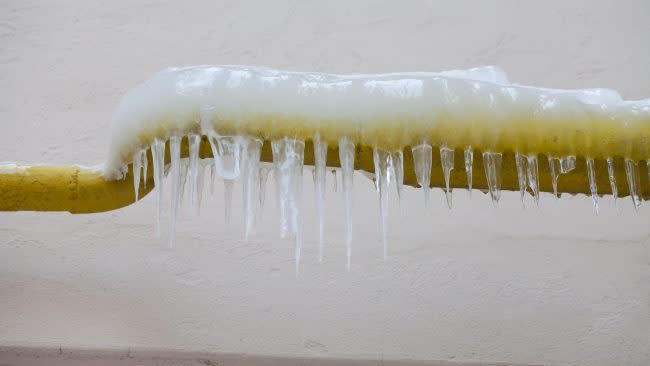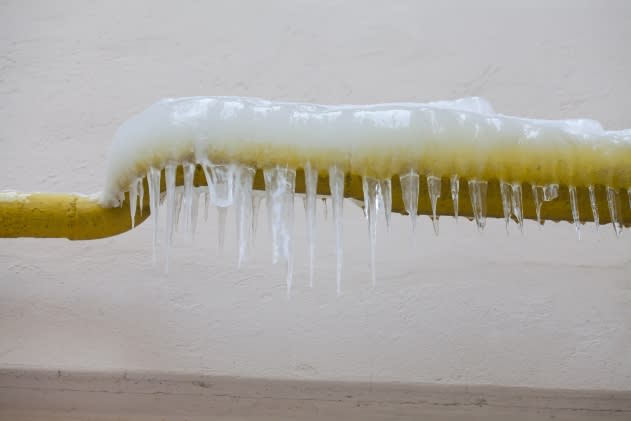How homeowners can prevent pipes from freezing during winter
When winter strikes and temperatures plummet, it can bring many risks for homeowners. However, following a few simple tips can prevent costly damage caused by frozen pipes.
"Frigid morning showers, frozen or cracked pipes, broken radiators, flooding, and leaks are just a few of the many unwanted plumbing issues brought on by cold winter weather," Green Apple Mechanical explained on its website.
To avoid a potential mess and an expensive fix, here are some ways to prevent pipes from freezing in cold weather.
Prevent clogged drains
Making a simple mixture with common household items and using them in sinks and bathtubs drains just once a week can go a long way, and the concoction is environmentally friendly.
 |
Icicles hang from a frozen pipe. (Besjunior / iStock / Getty images) |
"Make up a mixture of 1 cup of salt, 1 cup of baking soda, and 1/4 cup cream of tartar. Pour equal amounts into your various drains and follow it with 2 cups of boiling water for each drain," Green Apple Mechanical explained.
Open up cabinets
Opening cabinet doors in the kitchen and bathroom can help circulate warmer air around the plumbing, according to the American Red Cross.
However, people with young children or pets need to be sure not to leave cabinet doors open in areas where cleaning supplies are stored.
Let water drip from faucets
In frigid conditions, people should allow water to drip from their faucets, especially where pipes are not insulated, the American Red Cross suggests.
"Running water through the pipe - even at a trickle - helps prevent pipes from freezing," the Red Cross said.
 |
Space out showers
Spacing out showers can help to prevent pipes from freezing when Arctic air causes temperature to tumble.
"At least 10-minute intervals between showers is optimal to maintain hot water and proper pressure," Green Apple Mechanical said.
CLICK HERE FOR THE FREE ACCUWEATHER APP
Turning up the temperature in the water heating during the winter months will also help. However, the temperature should not be set above 125 F to prevent burns.
Keep thermostat at set temperature
While some might turn down the thermostat at night, the American Red Cross suggests that it is best to keep the temperature consistent during the day and night.
"By temporarily suspending the use of lower nighttime temperatures, you may incur a higher heating bill, but you can prevent a much more costly repair job if pipes freeze and burst," the Red Cross reported.
Eliminate drafts
Check throughout the home for areas where water supply lines are located in unheated areas of the house.
"Take measures to prevent the flow of cold air in these areas," Green Apple Mechanical said.
"Both hot and cold water pipes in these areas should be insulated. A hot water supply line can freeze just as a cold water supply line can freeze if water is not running through the pipe and the water temperature becomes cold."
Common unheated areas to check in your house include basements, attics, garages and under kitchen and bathroom cabinets.
If a faucet or pipe ends up freezing inside the house, it can be thawed by using an electric hair dryer, wrapping an electric heat pad around the pipe or by soaking towels in hot water and wrapping them around the frozen portion of the pipe.
It is important to start thawing closest to the faucet first and be sure to turn the faucet on so melted water can drip out.
In cases where the location of the frozen pipe cannot be located or it is not accessible, it is best to call a licensed plumber.
For the latest weather news, check back on AccuWeather.com. Watch the AccuWeather Network on DIRECTV, Frontier, Spectrum, fuboTV, Philo, and Verizon Fios. AccuWeather Now is now available on your preferred streaming platform.




